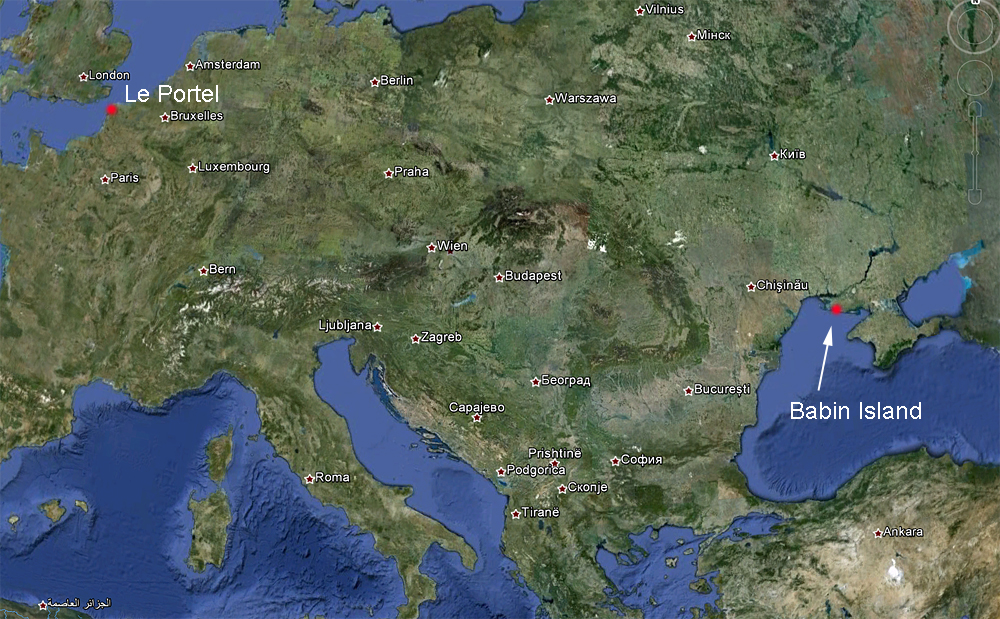 Mediterranean Gull (L. melanocephalus)
Mediterranean Gull (L. melanocephalus)
(last update:
Mediterranean Gull 4cy 3V57 February 24 2009, Le Portel / Boulogne-sur-Mer, NW France. Picture: Jean-Michel Sauvage.
Bird ringed as pullus on 28 May 2006 in Antwerpen, Vlaanderen, Belgium. Still in winter plumage, which is rather late for the species.
Observed at Stithians réservoir, Cornwall, GB from 18 February 2008 until 30 March 2008.
There are three distict periods to describe the presence and geographic distribution of Med Gulls in France:
1965-1975 In the Camargue, which is the only site for this species in France, a maximum of 2 couples raised chicks.
1976-1988 This colony gradually increased to 50 couples.
1989-1996 expansion up to 750 couples.
Since the 1930s, the main Med Gull colonies were located in the N.P. Chernomorskyi Tendra Bay (Black Sea) on the northwest coast of the Black Sea in the south-western Ukraine. Since the 1970's, this reserve hosted almost all of the world population of the species. After reaching a maximum of 336.000 pairs in 1983, the population of the Bay of Tendra fluctuated extremely. The current population is at a much lower level with 60.000 pairs in 1994.
International situation: The origin of the species were long edges of marshes along the Black Sea. The species was threatened with extinction after the war, with only 6200 pairs in 1952. What followed can only be described as an explosion of the population, with already 42.000 pairs in 1957 and 336.000 in 1985. The species arrived in Hungary in 1940 and also in Austria; the Netherlands in 1959; Belgium in 1964; Britain in 1968; Italy in 1978; and Spain in 1987.
Source: Proceedings of the 1st international meeting on mediterranean gull, Le-Portel, Pas de Calais, France, 4-7 September 1998.


ADULT MEDITERRANEAN GULL
From June to September, a complete moult takes place, into so-called "adult winter" plumage. The head pattern resembles the pattern in first winter birds, with blackish mask behind the eye. The mantle, scapulars, tertials and all the wing-coverts are replaced for plain pearl-grey feathers. The secondaries are completely white. The adult primaries are shiny pearly-grey, flashing white at a distance. There is a black line along the outer-web of P10 (and sometimes on P9 as well). Secondaries, under-wing and tail all completely white. The bare part coloration in adult plumage: Iris brown, orbital ring red or orangey-red, the bill red or orangey-red with a black bill-band and a yellowish tip and the legs dull reddish or dark. There is some variation in 3cy and 4cy wing-tip patterns.
The next moult in Mediterranean Gull is again a partial moult, from December to March-April and includes body and head, leaving birds in so-called "adult summer" plumage. The head develops a jet-black hood, extending down the nape. Adult birds have broad and contrasting white crescents above and below the eye. The bare part coloration in adult plumage: Iris brown, orbital ring coral red, the bill scarlet red often with a thin black bill-band and a yellowish tip and the legs red.
